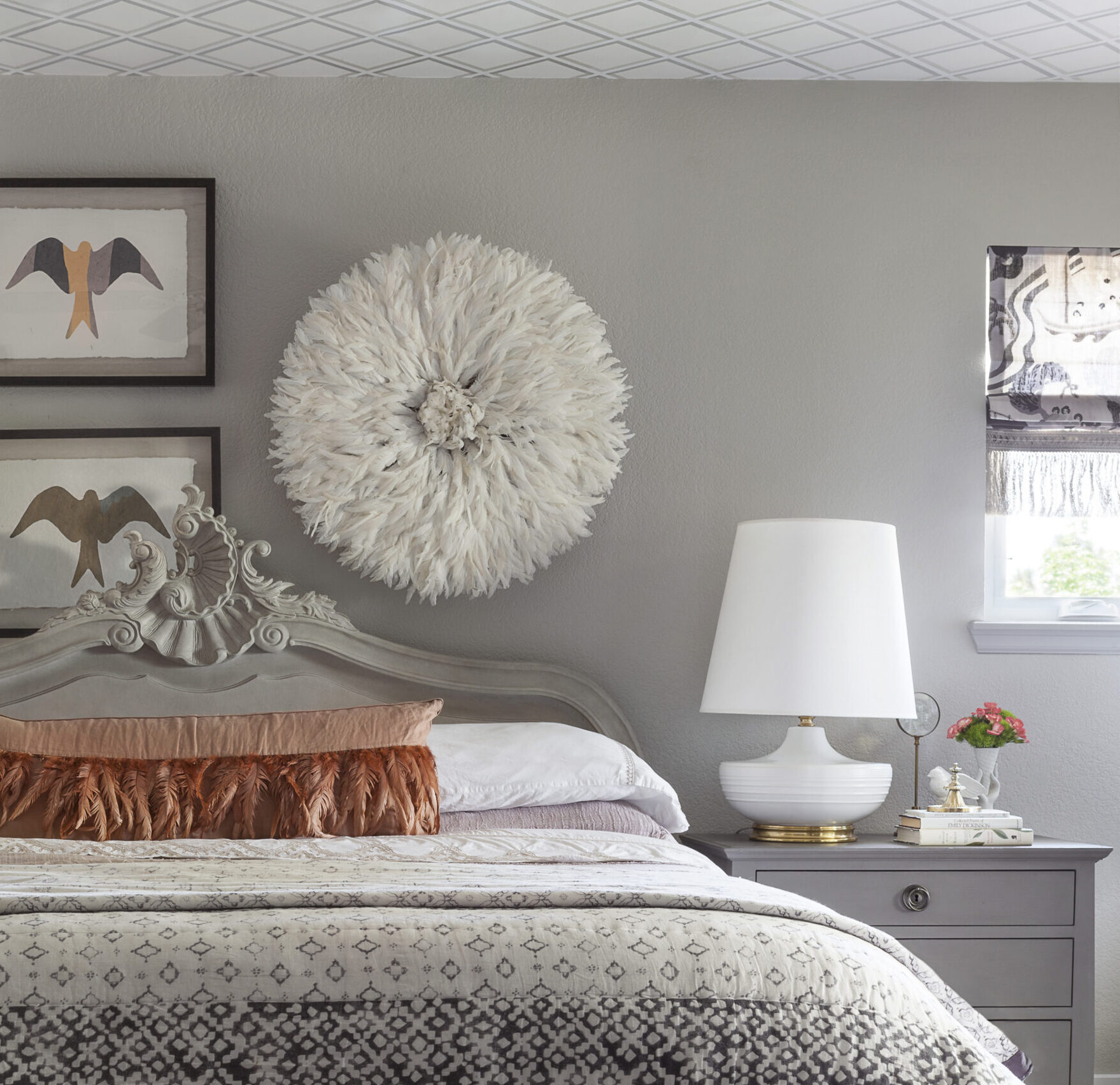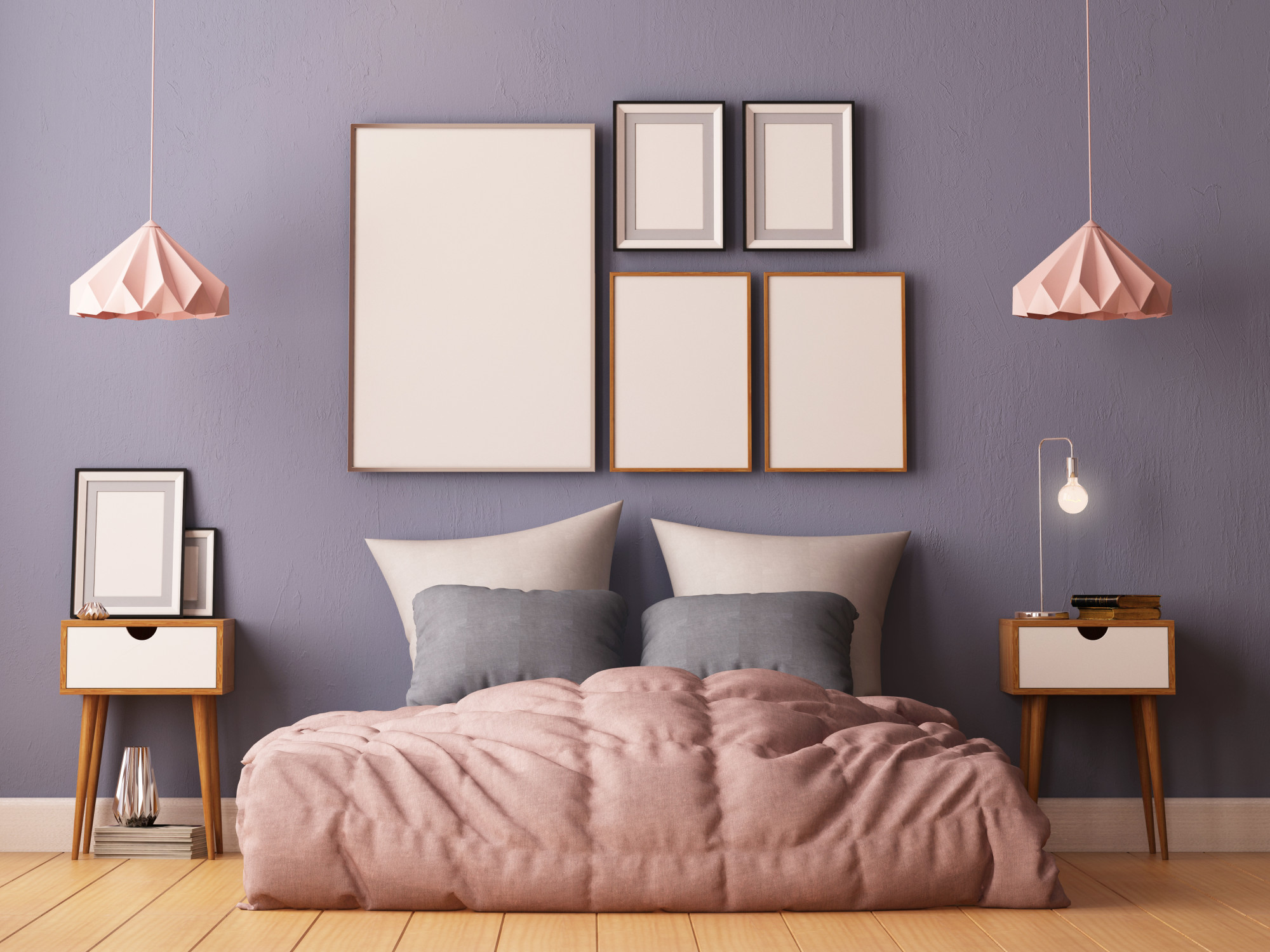Understanding Your Bedroom Preferences

Before diving into the exciting world of bedroom colors, let’s take a moment to understand your personal preferences and how they influence your color choices. This will help you create a space that truly reflects your personality and enhances your overall well-being.
Common Bedroom Color Palettes and Their Moods
Color psychology plays a significant role in shaping the atmosphere of your bedroom. Each color evokes distinct emotions and creates a specific ambiance. Let’s explore some popular bedroom color palettes and their associated moods:
- Neutral Palettes: White, gray, beige, and cream create a sense of calmness, serenity, and spaciousness. They provide a blank canvas for your personal style and furniture.
- Warm Palettes: Yellow, orange, red, and brown infuse your bedroom with warmth, energy, and vibrancy. They can be energizing and inviting, making your bedroom a cozy retreat.
- Cool Palettes: Blue, green, purple, and teal create a sense of tranquility, peace, and relaxation. These colors can promote sleep and reduce stress.
- Bold Palettes: Black, navy, emerald, and deep burgundy add drama, sophistication, and a touch of luxury to your bedroom. These colors can create a statement and make your space feel more intimate.
How Personal Style and Lifestyle Choices Influence Bedroom Color Selection
Your personal style and lifestyle choices are crucial factors in determining the right bedroom color. Consider your preferences for:
- Minimalism: If you prefer a clean and clutter-free aesthetic, neutral colors like white, gray, and beige are excellent choices.
- Bohemian: Embrace vibrant colors, bold patterns, and eclectic textures to create a unique and expressive space.
- Modern: Opt for sleek and sophisticated colors like black, white, gray, and metallic accents.
- Traditional: Choose warm and inviting colors like cream, beige, brown, and soft blues to create a classic and timeless look.
Factors Influencing Bedroom Color Choice, What colour to paint my bedroom quiz
Several factors beyond personal preferences play a crucial role in selecting the right bedroom color.
- Natural Light: The amount of natural light in your bedroom influences how colors appear. For example, rooms with ample sunlight can handle darker colors, while rooms with less natural light might benefit from lighter shades.
- Room Size: Light colors can make small rooms appear larger, while darker colors can create a more intimate feel in larger rooms.
- Furniture Style: The style of your furniture can influence the color scheme. For example, modern furniture often pairs well with neutral or bold colors, while traditional furniture may complement warm and inviting palettes.
Exploring Color Psychology and its Impact: What Colour To Paint My Bedroom Quiz

The colors we choose for our bedrooms can have a profound impact on our sleep, mood, and overall well-being. Color psychology is a fascinating field that explores the psychological effects of color on human behavior, emotions, and perceptions. By understanding the principles of color psychology, we can make informed decisions about the color palette for our bedrooms, creating a space that promotes relaxation, tranquility, or energy, depending on our desired outcome.
The Impact of Color on Sleep, Mood, and Energy Levels
Color can significantly influence our sleep patterns, mood, and energy levels. Different colors evoke different psychological responses, making them suitable for different purposes.
- Cool Colors: Cool colors like blue and green are often associated with calmness, peace, and relaxation. They can help lower heart rate and blood pressure, promoting a sense of tranquility. This makes them ideal for bedrooms, as they can create a soothing atmosphere conducive to restful sleep.
- Warm Colors: Warm colors like red and yellow, on the other hand, are known to stimulate the nervous system, increasing energy levels and alertness. While they may be energizing, they can also be overstimulating, making them less suitable for bedrooms. However, strategically incorporating warm accents can create a cozy and inviting ambiance.
The Role of Color in Creating Different Atmospheres
Color can be used to create a variety of atmospheres in a bedroom, from spacious and airy to intimate and tranquil.
- Spaciousness: Light colors like white, cream, and pale blues can make a small bedroom feel larger by reflecting light and creating a sense of openness. Using these colors on walls and ceilings can visually expand the space, making it feel more airy and inviting.
- Intimacy: Darker colors like navy blue, deep green, and burgundy can create a sense of intimacy and coziness in a bedroom. These colors can make the space feel more enclosed and inviting, ideal for creating a sanctuary for relaxation and rest.
- Tranquility: Soft, muted colors like lavender, pale pink, and light gray can promote a sense of tranquility and peace. These colors can create a calming and relaxing atmosphere, ideal for creating a restful and serene bedroom environment.
Practical Considerations for Choosing Bedroom Colors

What colour to paint my bedroom quiz – While color psychology plays a significant role in influencing your mood and overall well-being, practical considerations are equally important when selecting the perfect hue for your bedroom. Choosing the right color can enhance the beauty of your space, create a sense of harmony, and ultimately, contribute to a more restful and enjoyable sleep environment. This section will delve into practical aspects of color selection, focusing on how to use color strategically to highlight architectural features, create focal points, and complement your existing furniture and home decor.
Utilizing Color to Enhance Architectural Features and Create Focal Points
Color can be a powerful tool to accentuate the unique features of your bedroom and draw attention to specific areas. For instance, a lighter shade of paint on the ceiling can create a sense of height and spaciousness, while a darker shade on the walls can make a small room feel more intimate. Similarly, using a contrasting color on a single wall can create a focal point, drawing the eye towards a particular area, such as a headboard or a cozy reading nook.
Here are some practical tips to consider:
- Highlighting Architectural Features:
- High Ceilings: Using a lighter shade on the ceiling will visually expand the space, creating a sense of openness and grandeur.
- Low Ceilings: Opting for a darker shade on the ceiling can make the room feel cozier and more intimate.
- Recessed Areas: Painting a recessed area in a contrasting color can highlight its unique architectural detail, adding visual interest to the space.
- Mouldings: Painting mouldings in a contrasting color can emphasize their presence, adding a touch of elegance and sophistication.
- Creating Focal Points:
- Feature Wall: Choosing a bold, contrasting color for one wall can draw attention to a particular area, such as a headboard or a cozy reading nook.
- Accent Wall: A vibrant accent wall can add personality and visual interest to the room, complementing the overall color scheme.
- Artwork: Using a neutral background color can create a canvas for showcasing your favorite artwork, allowing it to take center stage.
Considering the Overall Color Scheme and Existing Furniture
It’s crucial to consider the overall color scheme of your home and the existing furniture when choosing a bedroom color. The goal is to create a cohesive and harmonious look that complements the rest of your decor. For instance, if your living room features warm tones, you might choose a similar color palette for your bedroom to maintain consistency. Alternatively, you can introduce a contrasting color in your bedroom to create a sense of visual interest and separation between spaces.
Here are some points to keep in mind:
- Complementary Colors: These are colors that are opposite each other on the color wheel and create a visually striking contrast. For example, blue and orange, or red and green. This approach can be used to create a vibrant and energetic atmosphere in your bedroom.
- Analogous Colors: These are colors that are next to each other on the color wheel and create a harmonious and cohesive look. For example, blue, blue-green, and green. This approach is ideal for creating a calming and relaxing environment.
- Monochromatic Colors: This involves using different shades and tints of the same color, creating a sophisticated and elegant look. For example, different shades of blue, from navy to sky blue. This approach can be used to create a sense of serenity and peacefulness.
Popular Paint Brands and Their Color Options
Numerous paint brands offer a wide range of colors, making it essential to explore different options and find the perfect hue for your bedroom. Here are some popular paint brands and their color options, highlighting specific color families that are well-suited for bedrooms:
- Sherwin-Williams: Known for its extensive color library, Sherwin-Williams offers a diverse range of color families, including calming blues and greens, warm neutrals, and sophisticated grays.
- Popular Color Families:
- Agreeable Gray (SW 7029): A versatile, warm gray that complements various styles.
- Sea Salt (SW 6204): A soft, calming blue-green that creates a serene atmosphere.
- Repose Gray (SW 7015): A light, airy gray that adds a touch of sophistication.
- Popular Color Families:
- Benjamin Moore: Renowned for its high-quality paints and rich color palettes, Benjamin Moore offers a wide selection of colors, including soothing blues, warm neutrals, and vibrant accents.
- Popular Color Families:
- Classic Gray (OC-23): A timeless, elegant gray that adds a touch of sophistication.
- Pale Oak (OC-20): A warm, inviting neutral that creates a cozy and welcoming atmosphere.
- Blue Note (2123-40): A serene, calming blue that promotes relaxation.
- Popular Color Families:
- Valspar: Valspar offers a wide range of colors at affordable prices, making it a popular choice for homeowners. Their color families include calming blues and greens, warm neutrals, and vibrant accents.
- Popular Color Families:
- Whimsical White (5003-1): A crisp, clean white that creates a bright and airy atmosphere.
- Gray Owl (5004-1): A soft, calming gray that adds a touch of sophistication.
- Morning Dove (5005-1): A serene, calming blue-green that promotes relaxation.
- Popular Color Families:
Choosing the perfect color for your bedroom can be a fun and exciting process! Once you’ve decided on your dream hue, it’s essential to know how much paint you’ll need to complete the project. A helpful resource for calculating the right amount of paint is how much paint is needed for a bedroom , which can help you avoid any last-minute trips to the hardware store.
With the right amount of paint, you’ll be well on your way to transforming your bedroom into a peaceful oasis.
Choosing the right color for your bedroom can be a fun challenge! While a quiz can help you explore your preferences, it’s also helpful to look at trends from the past. You might be surprised to learn what were the most popular bedroom paint colors in 2015 , and how those colors might inspire your own choices today.
Whether you prefer a classic look or something more contemporary, taking inspiration from past trends can definitely add a unique touch to your bedroom design.
